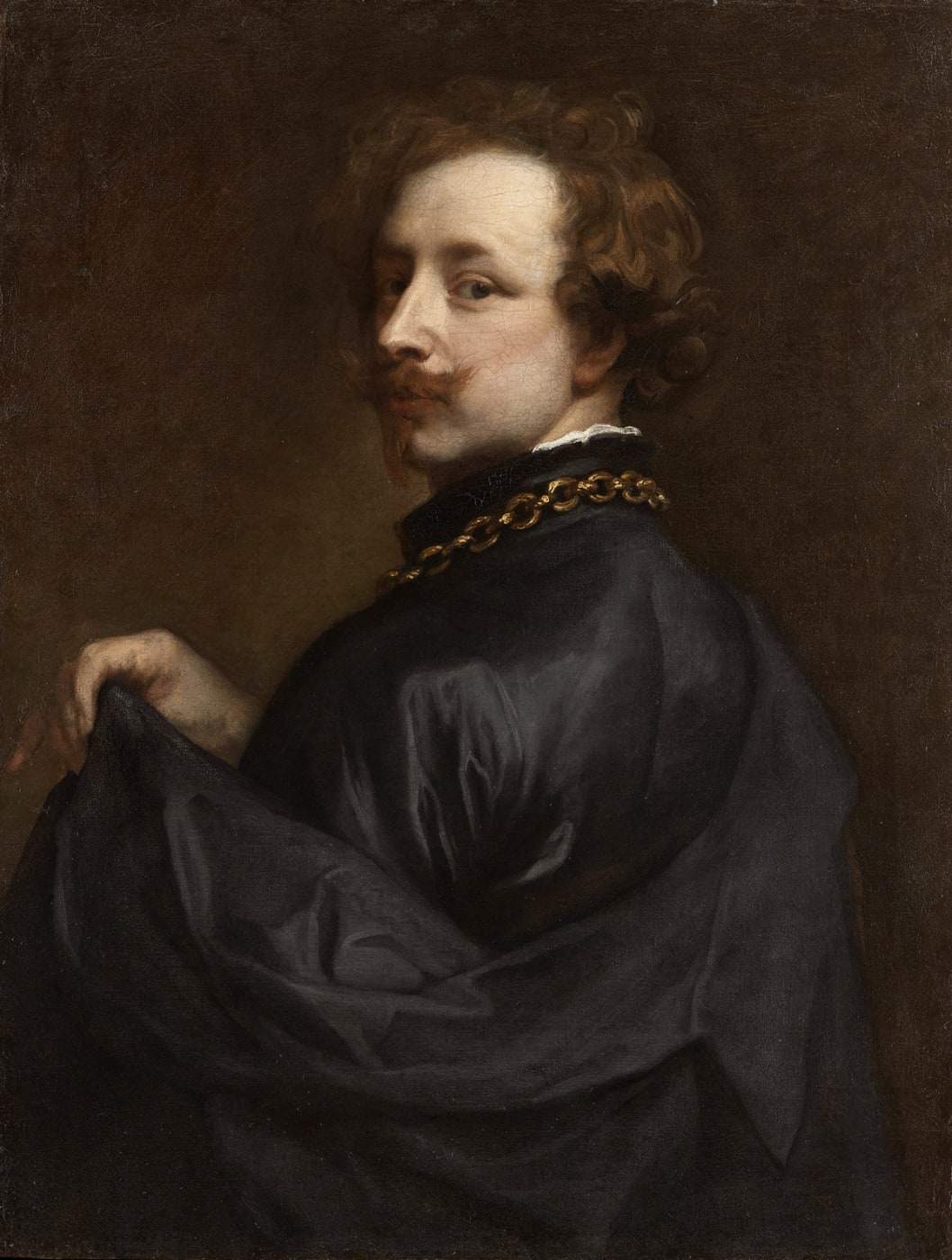Full Biography
The Antwerp born Flemish artist Anthony Van Dyck exerted an unparalleled influence over art produced in Europe during the seventeenth century. Best known for his illustrious talents as a portraitist, he was also a brilliant landscapist and master in the depiction of complex mythological and religious narratives.
In 1609, at the age of ten Anthony Van Dyck was apprenticed to the Flemish Baroque painter, Hendrik Van Balen and worked alongside Jan Brueghel the elder and Joos de Momper. Van Dyck left Balen to work in the studio of Peter Paul Rubens whilst simultaneously producing his own work independently.[1] Rubens, as Van Dyck’s master, was undoubtedly the most preeminent court painter in Europe at the time and described his young apprentice as ‘the best of my pupils’.[2] His influence was wielded over a young Van Dyck, who emulated his master’s meticulous observations on expression, gesture and form.
The Antwerp born Flemish artist Anthony Van Dyck exerted an unparalleled influence over art produced in Europe during the seventeenth century. Best known for his illustrious talents as a portraitist, he was also a brilliant landscapist and master in the depiction of complex mythological and religious narratives.
In 1609, at the age of ten Anthony Van Dyck was apprenticed to the Flemish Baroque painter, Hendrik Van Balen and worked alongside Jan Brueghel the elder and Joos de Momper. Van Dyck left Balen to work in the studio of Peter Paul Rubens whilst simultaneously producing his own work independently.[1] Rubens, as Van Dyck’s master, was undoubtedly the most preeminent court painter in Europe at the time and described his young apprentice as ‘the best of my pupils’.[2] His influence was wielded over a young Van Dyck, who emulated his master’s meticulous observations on expression, gesture and form.
Van Dyck developed a highly stylised form of representing individuals and soon became one of the most sought-after portraitists of the era.[3] The quality of his portraits brought him widespread fame and respect amongst the most powerful aristocratic and Royal elite across Europe. His wealthy patrons favoured his refined technique and his capacity to idealise his sitters by subtle manipulation of pose, expression, setting, clothing and composition.
Anthony Van Dyck’s reputation for capturing the elegance of his subjects prompted both James I and his successor Charles I of England to employ him as their court painter in 1621 and 1632 respectively.[4] After a period working for James I, Van Dyck left England to travel around Italy; he had been profoundly moved by the work of Titian, part of the Earl of Arundel’s private collection in Britain.[5] During his Italian tour, Van Dyck spent much of his time in Rome, Genoa and Palermo, assiduously studying masterpieces of the Italian Renaissance, focusing on Titian and Veronese. He admired their use of colour and soft modelling of form and incorporated these characteristics into his own work, enriching the knowledge he had acquired whilst working with Rubens.[6] Furthermore, Italy helped Van Dyck to strengthen his existing network of patrons and to advance his reputation as the leading portrait painter of the European intelligentsia.
The influence of Italian art and the Renaissance is palpable in the refined, sophisticated portraits Van Dyck painted when he returned to England in 1632. His success lay not only in his ability to capture the character of his subjects with unprecedented verisimilitude but also his capacity to imbue his subjects with compelling human emotion. His slender yet proud figures, often dressed in the latest fashions or luxurious costume, typify the imagery of the cavalier court of Charles I.[7] His sophisticated aesthetic became the preferred mode for court portraiture in Britain for many centuries to come. This distinctive style proved highly influential for many subsequent portraitists, in particular, disciples such as Sir Peter Lely, Sir Godfrey Kneller, Sir Joshua Reynolds and Thomas Gainsborough.[8]
Philip Mould & Company have sold numerous important works by Sir Anthony Van Dyck, including his famous last self-portrait, now in the collection at the National Portrait Gallery, London. One of Van Dyck’s finest surviving child portraits, Portrait of a Young Girl, is currently for sale at the gallery here.
[1] C. Brown, Van Dyck 1599-1641, (London, 1999), p. 15. An understanding of Van Dyck's career at this point rather complex; he was selling paintings under his own name, while also working for Rubens, imitating his style with outstanding competency given his age.
[2] Ibid, p.17.
[3] V. Charles and C. Klaus Baroque Art, ( New York, 2014), p. 144.
[4] K. Hearn, Van Dyck and Britain, (Tate Publications, London, 2009), p .42. s
[5] V. Charles, Anthony Van Dyck, (Parkstone International, London, 2004), pp. 57 - 86. For further information on Van Dycks time spent in Italy.
[6] Brown, (1999), p. 19.
[7] White, (1995), p. 71.
[8] R. Blake, Anthony Van Dyck, (London, 2009), p. 197.



















